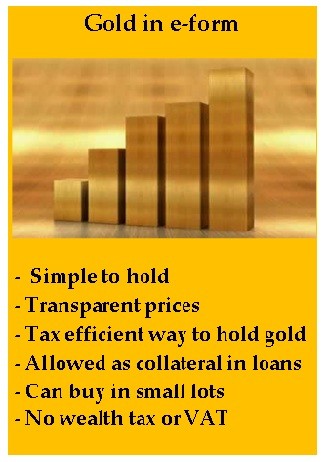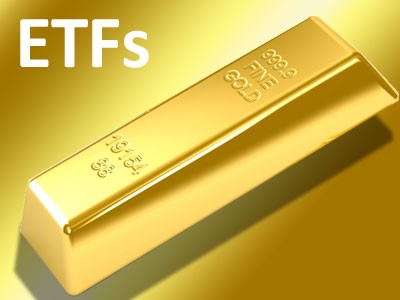Gold ETF
Post on: 7 Июль, 2015 No Comment

By Zoe Van Schyndel, CFA | More Articles
Bitten by the gold bug? If so, several ETFs available now offer investors a quick and easy fix for their gold fever.
Four of these funds are targeted toward U.S. investors and come in various packages. Two of these — State Street’s streetTRACKS Gold Shares ( NYSE: GLD ) and the iShares Comex Gold Trust ( AMEX: IAU ) — hold physical gold. Van Eck’s Market Vectors Gold Miners ETF ( AMEX: GDX ) owns stocks, while the newest fund, PowerShares DB Gold Fund ( AMEX: DGL ). owns gold futures. All four make it cheap and simple for investors to participate in the gold market.
But it’s not yet clear whether that golden glow on the horizon is the gleam of a metal that’s likely to become even more precious, or just a banana peel waiting to trip up investors.
GLD
The granddaddy of gold ETFs, GLD is the oldest and the biggest of these funds. It lets investors participate in the gold bullion market, with each share representing one-tenth of an ounce of gold. Launched at the beginning of 2004, GLD has accumulated nearly $10 billion in assets since then. The fund was up just more than 23% in 2006 and nearly 17% in 2005. It has an expense ratio of 0.40%.
IAU
IAU was launched in early January 2005, one year after its heftier brethren, GLD. In 2006, this fund’s performance was just slightly behind GLD’s, at 22% came in at 1%. IAU has gathered more than $960 million in assets so far. That makes it a very successful fund, but it’s well behind the first mover in this space. IAU also has a 0.40% expense ratio.
The assets of the trust consist of nearly 700,000 ounces of gold held by the custodian on behalf of the trust. The trust is not registered as an investment company under the Investment Company Act of 1940, nor is it a commodity pool for purposes of the Commodity Exchange Act.
GDX
GDX tracks the performance of the Amex Gold Miners Index, which is made up of only 38 stocks, so the fund is not diversified. The fund came to market in May 2006 with a solid $624 million in assets. The fund is down about 3.5% so far this year, yielding around 0.29%. Its expense ratio is 0.55%, the highest of the four funds.
Non-U.S. investments make up more than 80% of the fund. It’s invested heavily in Canada, which makes up nearly 60% of assets. South Africa accounts for nearly 20%, while the U.S. share comes in at a relatively low 16%. Top holdings include Barrick Gold ( NYSE: ABX ) and Newmont Mining ( NYSE: NEM ). Large-cap companies account for 61% of the fund, while medium caps make up 28%, and small caps are slightly less than 10%.
DGL
ETFs driving the gold market?
The rapid growth of gold ETFs makes it seem as though they’re taking over the gold market. In reality, that’s probably not happening anytime soon. It’s more likely that the rise in gold’s price has been driven in part by the increased purchases in gold coming from these funds. Clearly, gold ETFs are making the market for gold and gold-company stocks deeper and more liquid.
Gold vs. bullion

If you’re a miserly type who wants a tangible asset to touch, hold, and feel, gold coins or bullion are a good choice. Certainly, in times of crisis, the ability to access this store of wealth quickly and easily can be a compelling reason to hold physical gold. Of course, there are costs associated with having gold close at hand, including storage expenses, insurance, security, and the fact that gold is hard to identify. There are also broker fees involved in buying and selling physical gold. And if it’s stolen, your gold can be melted down and re-formed with no identifying marks.
Gold ETFs are a much simpler alternative for most investors, since these funds provide quick and easy access to the gold market. In addition, ownership consists of an electronic certificate or a piece of paper. Lose the paper or wipe out your computer’s hard drive, and you can easily re-establish your ownership.
Risks
There are a number of risks involved in the gold market. For instance, since gold-mining companies often have operations in far-flung parts of the globe, a fund like GDX faces the potential perils associated with all non-U.S. investments. Furthermore, gold-mining companies are subject to all the usual competitive pressures as well as fluctuations in the price of gold bullion. And all investors in gold face the potential for governmental interference, whether by outright appropriation or by dumping large quantities of the metal on the market, thereby reducing demand and price.
Is the future shiny or dull?
Gold has been a safe haven of wealth across many civilizations and generations, and with political and economic risks ever-present around the world, it’s likely to remain in demand. Lately, investor demand for alternative assets has benefited gold, as have rising commodity prices. Yet the current high prices for gold are a concern, and the often volatile market for gold makes an investment in this area risky.
For investors who want gold, but also want to hedge their bets, DGL might be a suitable choice. You’ll earn a return on risk-free Treasuries while maintaining the upside potentials of the metal. Many other investors have chosen GLD, which has the advantage of a profitable long-term track record. Yet whether any of these gold ETFs shine in the near future, or turn out to be just so much cheap bling, is a tough call at this point. As always, invest with care.
Fool contributor Zoe Van Schyndel lives in Miami and enjoys the sunshine and variety of the Magic City. She does not own any of the funds or securities mentioned in this article. The Motley Fool’s disclosure policy prefers iron pyrite.














